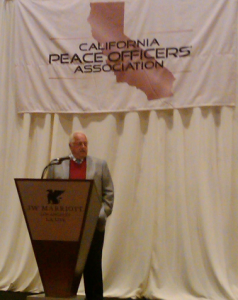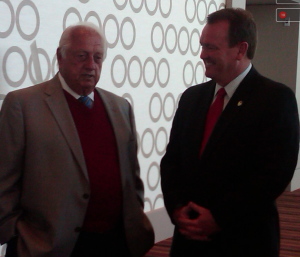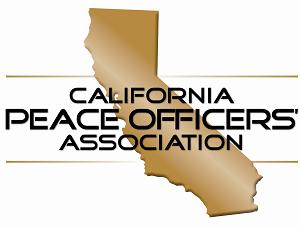 Alex Gerage is a graduating senior at Loyola University Chicago double majoring in communication and political science. This fall, he will attend graduate school at Northwestern University for a master’s degree in communication. Alex has long been intrigued by the relationship between today’s new media and government. For an independent study project, he researched social media’s impact on law enforcement practices, and the implications such an innovative pairing may have on public outreach and crime solving. Follow him on Twitter
Alex Gerage is a graduating senior at Loyola University Chicago double majoring in communication and political science. This fall, he will attend graduate school at Northwestern University for a master’s degree in communication. Alex has long been intrigued by the relationship between today’s new media and government. For an independent study project, he researched social media’s impact on law enforcement practices, and the implications such an innovative pairing may have on public outreach and crime solving. Follow him on Twitter
@AlexGerage.
The days of old school police work are over
The first decade of the 21st century has seen the rise of new media and communication practices. The forefront of this media shift has been the adoption of online social networks to communicate. This wave of innovative technology, which has seemingly reached all corners of American culture, has now caught the attention of law enforcement across the country.
This paper will explore the extent to which social media has been incorporated into law enforcement practices to help communicate with the public and solve crime. To better understand these issues, I interviewed Lauri Stevens, a social media consultant to law enforcement at LAwS Communications, via email. I also spoke with Michael Vallez, a former police officer, who is now a social media strategist at USIS, over the phone. Their insight highlighted how many police departments see the potential of Facebook, Twitter and other social networks to engage with their communities. For others, social media adoption has been hindered by the cost concerns. Regardless, social media is an issue law enforcement can no longer avoid.
Motivation for Change: The Purpose of Social Media in Law Enforcement
Above all else, law enforcement agencies see social media as an opportunity to reach their communities, who increasingly use social networks to communicate and consume news. In March, Facebook surpassed Google as the most visited website on the internet. According to Facebook.com, the social network houses over 400 million active members, and half of them log on to the site every day. Other social networks like Twitter and YouTube have grown at a remarkable rate despite being in existence for five years or less.
With social networks becoming a norm of everyday communication, they are increasingly being used for illegal purposes. Criminal activity traditionally seen outside cyberspace has entered the social network realm. For instance, KTLA News in California reported in November of 2009 that an increasing amount of gang members are using Twitter and Facebook to recruit and organize operations. In addition, cybercrimes like identity theft, child pornography and online scams increased by 22.3% in 2009, according to the Internet Crime Complaint Center’s 2009 Annual Report.
With this in mind, law enforcement agencies recognize they must establish a presence in the digital realm to foster stronger relations with their community and to fight crime. As Lauri Stevens explains, police departments are adopting social media to actively connect with citizens, “If they’re really smart, the agencies are engaging citizens with these platforms to generate positive attitudes toward their departments just by the simple fact that they are engaging even more than anything they’re saying in particular. Additionally, many agencies are using the platforms to conduct investigations.”
What are the primary social networks being used? How are they using them?
There is no single social media application that can meet a police department’s needs. Fortunately, law enforcement is learning about the unique purpose and structure of the internet’s most popular networks, and is using them to communicate with the public and solve crimes in their cities.
Facebook has proven to be more than a host for college party pictures. Instead, law enforcement has used the service to post wanted signs of individuals tied to crimes. According to a posting on Mashable.com by Lon S. Cohen, several departments have employed Facebook to post “digital wanted signs.” The Boynton Beach Police Department in Florida and the Leicestershire Constabulary in the United Kingdom are two of many that have posted pictures of ongoing investigations to spread the word and, according to Cohen, encourage “residents to respond with any leads they might have.”
Twitter provides the opportunity for departments to “tweet” instant messages to citizens that follow them, which has proven valuable in communicating breaking news. The Lowell Police Department in Massachusetts uses Twitter to update their community about traffic accidents, “Accident on RT 38: There was an accident on Rt. 38 this morning that is causing traffic to be blocked on Rogers St.” Similarly, the Birmingham Police in Alabama recently used Twitter to spread the word about a missing person, “Missing Person: The Birmingham Police Department would like your help in locating: Andrew Ramey, 38, of Birmingham.”
YouTube also has shown to be effective in alerting citizens about crime in their area. The Milwaukee Police Department is one of several across the country that maintain their own YouTube channel. The department has posted 91 videos that range from press conferences to security footage of at large criminals. Attached to these clips are Milwaukee Police contact information so citizens can reach them if they have tips.
When asked about how these mediums and others are helping police reach the community, Lauri Stevens said, “I think these platforms are helping law enforcement agencies increase the amount of news that gets to the public. Previously they had to rely on traditional media outlets to cover their stories. Now they generate the stories themselves directly to news consumers.”
Indeed, the most notable effect of adopting social media is that law enforcement is able to communicate directly with citizens. And in Stevens’ experience, direct communication pays off, “The ones who are really engaging people and tweeting opinions, comments, news about arrests, safety tips and etc. are getting great results.”
Arguably no department has a more comprehensive social media platform than the Boca Raton Police Department in Florida. Led by Chief Dan Alexander, the Boca Raton Police has adopted several social networks in order to communicate with their community. The department has their own YouTube channel where they post surveillance video of crimes in hopes of identifying and locating perpetrators. They use their Facebook page to post criminal wanted signs and press releases. Their official Twitter account acts as a forum for breaking news regarding accidents or crimes in progress. In addition, Chief Alexander also operates his own blog and Twitter page.
Although each medium serves a unique purpose, they all encourage feedback from the community. Florida citizens have gravitated to these pages and responded to the department’s outreach for help and engagement. The Boca Raton Facebook page is filled with praiseful comments like “Thumbs up!” and “Great job!” Their Twitter page has over 1000 followers that “re-tweet” information about missing persons and other emergencies. These measures have fostered a new relationship between the police and the public that stresses department transparency and teamwork.
Arguably the most striking move by the department is that it no longer releases written press releases to the media. All statements and press releases are released online, where they are available to journalists and the public. While the Boca Raton Police are currently the exception to the rule, they embody the potential law enforcement has to establish a comprehensive social media strategy.
The Attitude of Law Enforcement Agencies
The police departments that have been most proactive in implementing social media have done so because top personnel have led the charge. In an August 2009 article on her ConnectedCops.net blog, Lauri Stevens explained that police chiefs must set the tone for their departments and lead in the adoption of social media, “In order for the agency to gain the credibility it would need to achieve success, the top brass needs to not only buy in but also communicate their approval and encourage their officers to participate.”
Sergeant Tom Le Veque, wrote in a November 2009 post on Cops 2.0 that social media is having a uniting effect because it has connected police chiefs to younger officers. In his article, he explains that Bellevue Police Chief John Stacey attracted the attention of a younger officer after announcing he was attending the #140 Twitter Conference:
“Chief Stacey described how a young officer ‘lit up’ during a recent briefing where the Chief mentioned that he would be out of town for a Twitter conference. The young officer was surprised that the Chief knew what Twitter was all about. That officer and the Chief had never really engaged in conversation before that moment, but because of that common ground have developed a new and improved rapport.” (Le Veque)
Instances like these not only show the benefits that social media can have in connecting a police department to the community, but also the way in which veterans of the force can form bonds with new officers.
Not All Departments On Board
Despite the positive attitudes law enforcement agencies have shown towards social media, structural and financial limitations have prevented some departments from jumping on board.
Michael Vallez notes that the cost needed to maintain a social media presence has left police departments asking, “What am I going to have to do, have a guy monitor Facebook?” Particularly in this economic climate, Vallez believes police departments do not want officers in front of a computer when they could be out in the field. With that said, he contends that, at a minimum, Twitter and Facebook should be used by police because they can provide immediate communication to the public during times of emergency.
Another concern for police departments is the time commitment needed to implement a social media strategy. While most applications are free to join, substantial dedication is needed to establish a profile and update it consistently. Many police departments simply do not have the personnel or time to devote to a comprehensive campaign. According to Lauri Stevens, underestimating the time and effort involved in maintaining a social media presence can lead to problems for a department:
“They shouldn’t underestimate the amount of time it takes to manage and run these online presences. Training is important, not only to make sure their officers don’t do something that will get themselves into trouble, but also because what they need to do is plan it up front to create their strategy, design and schedule their training, determine their resources and roll-out their program.” (Stevens)
Stevens says the campaign plans she has overseen have taken anywhere from one week to eight months to be implemented, “It really depends on the size of the agency.” As she later suggested though, the apprehension some departments have to dive into social media may run deeper than their pocketbook or schedule, “Cops are resistant to change. We all are but I think they are a little more so.”
The SMILE Conference
“I’ve created The SMILE Conference to bring together the best of the best law enforcement professionals using social media with the goal of helping them share best practices with each other and with delegates in attendance. The people registering for the conference are the people who will be the next to roll out comprehensive, well-designed social media communication plans in their agencies.”
~ Lauri Stevens
One of the most effective ways law enforcement agencies are learning about the benefits of social media is through the SMILE Conference. The three day forum serves as a hub for law enforcement personnel to learn about social media’s potential in the industry. As the creator of the conference, Lauri Stevens believes the event helps exchange ideas and spurs social media adoption in more law enforcement agencies:
“I’ve created the SMILE Conference to bring together the best of the best law enforcement professionals using social media with the goal of helping them share best practices with each other and with delegates in attendance. The people registering for the conference are the people who will be the next to roll out comprehensive, well-designed social media communication plans in their agencies.” (Stevens)
The 2010 SMILE Conference was held in April in Washington, DC. According to the SMILE Conference website, 19 different speakers spoke about social media in law enforcement. The diverse lineup of presentations ranged from former Los Angeles Police Department Deputy Chief Mike Bostic on “Social Media in Systems Integration” to Toronto Police Constable Scott Mills’ presentation on “Using Social Media and the Internet to Prevent Violence.”
Michael Vallez was also in attendance at the conference. His presentation called “Podcasting: Who, What, Where, Why” examined the potential podcasts have to be used in emergency circumstances. Before now, podcasts have been largely created for entertainment purposes to serve niche audiences. Vallez explained how podcasting can be used by police departments to release audio and video to the public in emergency situations. As he told me before this year’s conference, SMILE has the potential to grow into an even bigger event, “I think it’s great. I’m an evangelist for having social media in police departments. Over time, this is going to grow into a bigger conference.”
Interestingly, if creator Stevens gets her way, another conference will be on the horizon. Her hope is to have a SMILE Conference on the west coast of the United States before the year ends.
The Future of Social Media in Law Enforcement
All innovative technologies need time before they are adopted into the culture. Facebook and Twitter are established media platforms today, but three years ago, were still considered start up programs designed for niche audiences. On a similar level, Lauri Stevens suggests the concept of social media in law enforcement can one day have mass establishment, but needs time to develop:
“I believe law enforcement use of social media is in its infancy. If you’re familiar with Geoffrey Moore’s writing, he speaks of an adoption curve. Adoption of social media by law enforcement is at the point of where the line of adoption is about to turn up. I don’t have any empirical evidence, only my hunches. But my intuition has served me well in the past.”
One reason the future looks bright for social media in law enforcement is because the United States federal government has taken a proactive stance in incorporating social media use. Agencies from the Center for Disease Control to the Department of Homeland Security maintain Twitter or Facebook pages online. Such a move brings new meaning to “government transparency.” United States citizens not only have the opportunity to follow their government directly, but the potential is also there to engage with them.
A February 2010 memo by the Department of Defense outlined an official social media policy for staff and members of the military to follow. In an August 2009 story by Reuters, Deputy Defense Secretary William Lynn explained the importance of drafting a uniform policy, “These tools are proving valuable in areas such as recruitment, public affairs, and quality of life for our military personnel, as well as sharing information with allies, coalition partners and military families.”
According to Michael Vallez, a comprehensive and committed effort by the government will motivate law enforcement agencies at the local level to develop an online presence. He believes the top-down approach will encourage police to follow the government’s lead, and before long, social media will be an established part of law enforcement communication. If agencies can move past the financial and time cost of such an endeavor, which is no given considering the economic times, social media will definitely catch on.
The Freight Train
“My thought was seeing and feeling the intensity of a freight train going by as you are standing next to the tracks as it goes speeding past. The energy alone is mind blowing. Knowing that information processing is even more intense it seemed way more sensible to get on or get involved with it or you will literally be left alone by yourself wondering what happened. When you step out to look or try to catch up you get run over by the next one coming twice as fast.”
~ Chief John Stacey
 Chief John Stacey of the Bellevue Police Department in Nebraska has led his department to be one of the most active law enforcement agencies in social media. He explained to me via email that he likens the clamor of social media in law enforcement to an approaching freight train:
Chief John Stacey of the Bellevue Police Department in Nebraska has led his department to be one of the most active law enforcement agencies in social media. He explained to me via email that he likens the clamor of social media in law enforcement to an approaching freight train:
“My thought was seeing and feeling the intensity of a freight train going by as you are standing next to the tracks as it goes speeding past. The energy alone is mind blowing. Knowing that information processing is even more intense it seemed way more sensible to get on or get involved with it or you will literally be left alone by yourself wondering what happened. When you step out to look or try to catch up you get run over by the next one coming twice as fast.” (Stacey)
His analogy offers a simple message to law enforcement across the country: it is time to get on board.












